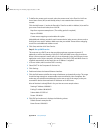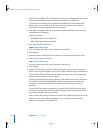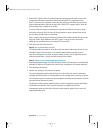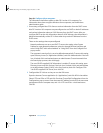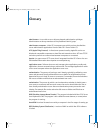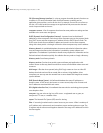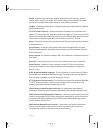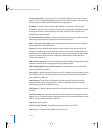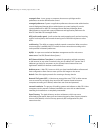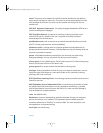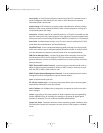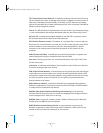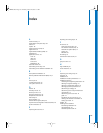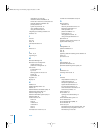
Glossary 131
managed client A user, group, or computer whose access privileges and/or
preferences are under administrative control.
managed preferences System or application preferences that are under administrative
control. Workgroup Manager allows administrators to control settings for certain
system preferences for Mac OS X managed clients. Macintosh Manager allows
administrators to control both system preferences and application preferences for
Mac OS 9 and Mac OS 8 managed clients.
MTA (mail transfer agent) A mail service that sends outgoing mail, receives incoming
mail for local recipients, and forwards incoming mail of nonlocal recipients to other
MTAs.
multihoming The ability to support multiple network connections. When more than
one connection is available, Mac OS X selects the best connection according to the
order specified in Network preferences.
MySQL An open-source relational database management tool for web servers.
name server See DNS (Domain Name System).
NAT (Network Address Translation) A method of connecting multiple computers
to the Internet (or any other IP network) using one IP address. NAT converts the IP
addresses you assign to computers on your private, internal network into one
legitimate IP address for Internet communications.
NetBoot server A Mac OS X server on which you have installed NetBoot software and
have configured to allow clients to start up from disk images on the server.
NetInfo One of the Apple protocols for accessing a directory domain.
Network File System (NFS) A client/server protocol that uses TCP/IP to allow remote
users to access files as though they were local. NFS exports shared volumes to
computers according to IP address, rather than user name and password.
network installation The process of installing systems and software on Mac OS X client
computers over the network. Software installation can occur with an administrator
attending the installations or completely unattended.
Open Directory The Apple directory services architecture, which can access
authoritative information about users and network resources from directory domains
that use LDAP, NetInfo, or Active Directory protocols; BSD configuration files; and
network services.
LL2343.Book Page 131 Thursday, August 14, 2003 5:12 PM



